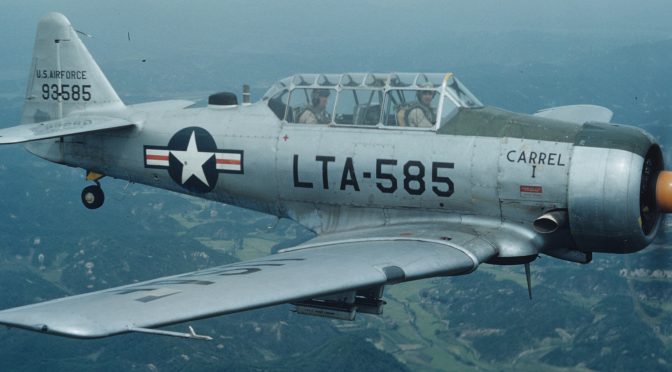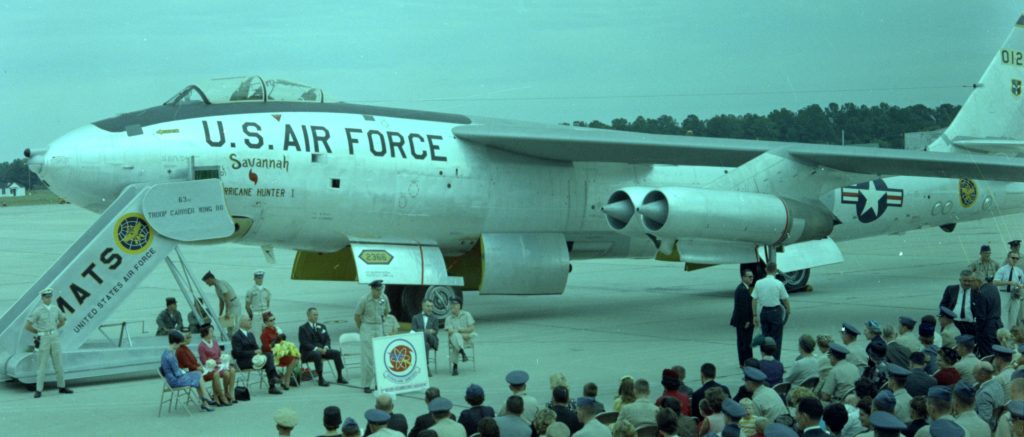The first hurricane (typhoon) hunter was a pilot flying a Second World War T-6 Texan through the eye of a hurricane, on a dare! Realizing that flying through a hurricane was doable, the U.S. Air Force set upon a long journey of modifying aircraft to collect weather data about hurricanes.
The first data collected, in 1944 by B-25 bombers (WB-25 Army Hurricane Reconnaissance Unit), is credited with saving hundreds of lives. Prior to the development of airborne hurricane hunters, thousands of people in the United States died as a result of hurricanes, but after the use of flying weather trackers the average death toll dropped significantly.
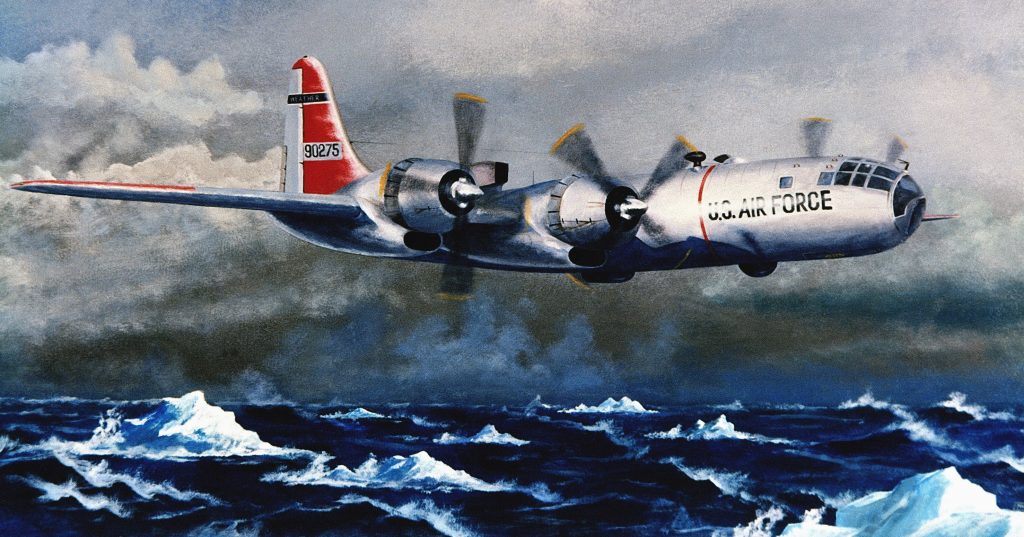
Painting by Thomas Wojahn of a WB-50 of the 53rd Weather Reconnaissance Squadron, Falcon Alpha Mission-1957.
Perhaps the name The Hurricane Hunters came from the the title of a book first published in 1955 about the U.S. military’s obsession with tracking hurricanes. Download your free copy here.
Silent U.S. Navy film, from 1961, showing the use of the EC-121 Warning Star (WV-2) ‘AWACS’ as a hurricane hunter:
Even the B-47 strategic bomber (WB-47) was used as a Hurricane Hunter.
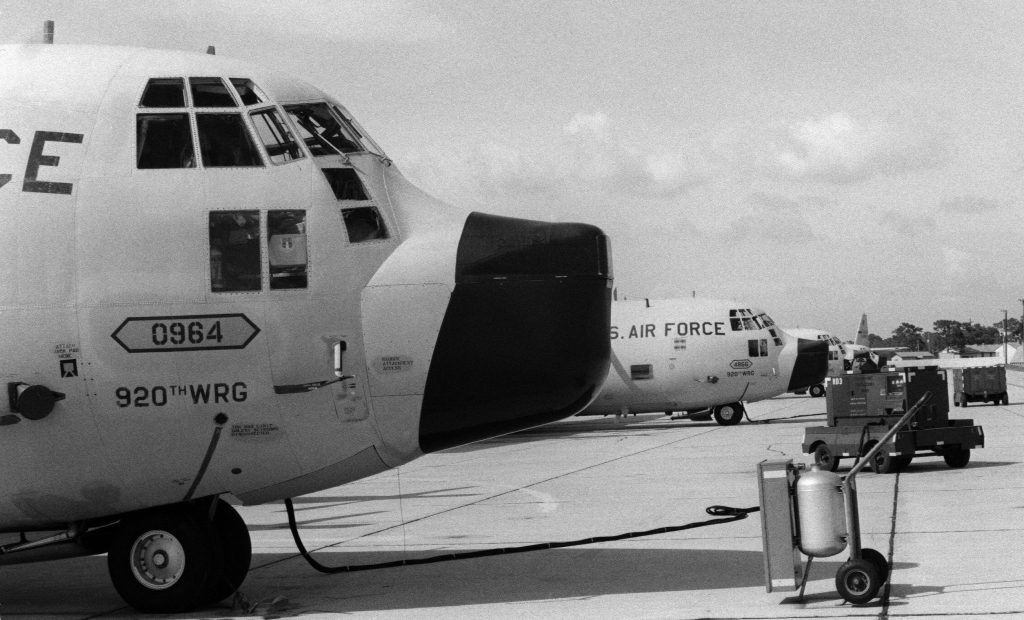
WC-130 Hercules f the 815th Weather Reconnaissance Squadron, 920th Weather Reconnaissance Group, being prepared for a mission to monitor Hurricane Allen, August 1980.
Official USAF video history report, including the T-6, B-25, B-29 (WB-50) and C-130:
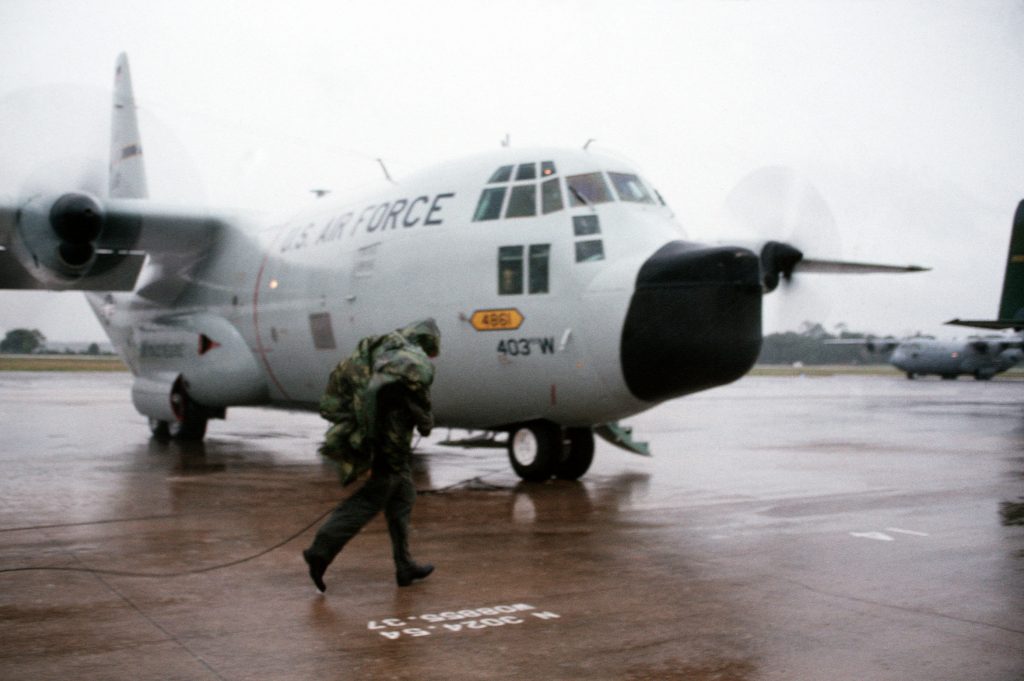
A USAF WC-130 Hercules from the 53rd Weather Reconnaissance Squadron, ‘Hurricane Hunters’, Keesler Air Force Base, Mississippi. USAF photo dated 1995.
But it not just lives that are saved with the creation of airborne hurricane hunters, in this 2018 video report about the purpose of the 53rd Weather Reconnaissance Squadron (Keesler Air Force Base, Mississippi) it’s revealed that mass evacuations of the public cost one-million USD per mile of coastline! Taxpayer costs can be reduced by providing accurate weather data to allow for more timely evacuation orders:
WC-130J & WP-3D: HUNTING DORIAN
T-6 SNJ TEXAN POKEY AIRPORT, 2012 & 2014
